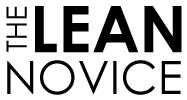Gemba Walks by James P. Womack
Today I have added a book to the book section that I highly recommend!
One of the greatest challenges when it comes to Lean is to adapt the thinking of the iterative continuous improvement was to problem solving. In my opinion this is aided by examples from the real world. It is important though not to see them as guides of how to do but rather ideas on how to approach a problem, how to think in the face of challenges.
Of all the books I have read so far this is one of my favourites. We get to come along with James P. Womack on his journey of going to the Gemba and seeing for himself. A valuable insight in to one of the more known students of Lean.



 Since I had learned that Lean was originally from Toyota, it seemed that Jeffrey Likers The Toyota Way was a good place to start. The short of it is that I was hooked immediately. The next book was Lean Thinking by Jim Womack. Again, it really opened my eyes to a whole new world. At this point I didn’t really know who any of the famous Lean-thinkers where but as it happens I had picked a good starting point.
Since I had learned that Lean was originally from Toyota, it seemed that Jeffrey Likers The Toyota Way was a good place to start. The short of it is that I was hooked immediately. The next book was Lean Thinking by Jim Womack. Again, it really opened my eyes to a whole new world. At this point I didn’t really know who any of the famous Lean-thinkers where but as it happens I had picked a good starting point.